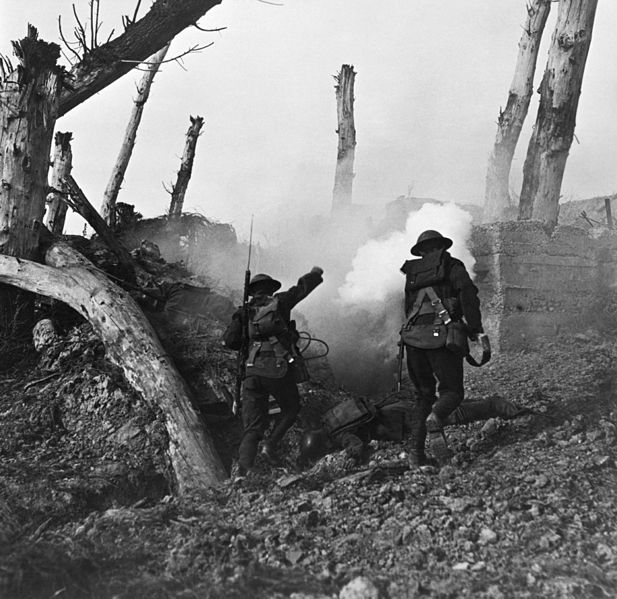
Wesley J. Creech, a private, is among the soldiers buried at the Flanders Field Cemetery. The names of the servicemen who died during the First World War are engraved in gold on the Wall of the Missing in the Flanders chapel.
A week before he died, Pvt. Creech wrote to his wife Carzetta and 5 month old daughter Marie in a letter dated August 24, 1918, “If I never see you and Marie any more in this life I hope to meet you in a Better Place.”
They were advancing at a very fast pace as the Germans retreat. A week later, he was hit and killed in combat.
President Barack Obama is poised to visit the cemetery to remember the Americans who died in the Great War. The war was so brutal that it claimed around 14 million lives and injured around 7 million more. The cities, towns and villages were reduced to ruble at the end of the war. Many were not able to recover from the damage.
Obama will have a wreath-laying ceremony this last week of March ahead of the formal ceremonies which will start in August. The World War I centenary will be marked to remember the outbreak of the war in August 1914 between the German empire and Britain, France, Russia and other nations.
Originally, the United States chose not to join the war. But after four years, they entered into the conflict during the later but critical period of the war. In fact, their participation in the war was decisive in ending the war while most of the soldiers of countries who started the war are long exhausted. It would thus be rare to find a testimony of an American soldier who died before 1918.
Over 2 million soldiers belonging to the U.S. troops are buried at the Flanders Field. When they joined the war, the U.S. contingent headed the fight in the Western Front.
Professor Dr. Luc De Vos of Leuven University recognizes the role of the U.S. troops in “turning the tide”. For many years, both sides have been fighting in the trenches without one side bent on capitulation. It was going on for many years that both sides lost were exhausted. The trenches ran from Switzerland to the North Sea, a killing zone and grave for soldiers who either succumb to the poison gas, bullets or bombs.
The United States believed that the Great War was “Europe’s War” and stood not to interfere. However, it finally declared war on Germany 1917 and after nearly a year finally organized an army that was strong in number and training.
When the U.S. decided to join the war, its army was smaller than that of the Danish forces. It was also way much smaller than the Belgian troops, according to Prof. De Vos. The U.S. troops had to force the Germans to retreat from the Western Front with great effort.
After having a series of encounter with the American contingency, the high military officials of the German empire realized that they were at a losing end. The German troops quickly retreated. A revolutionary government took into power in Berlin and agreed on a truce on November 11, 1918.
The World War I is usually not as commemorated in the United States compared to the Second World War. But, President Obama’s visit might just be the start of America’s remembrance to the Great War which took millions of lives and changed the course of history of not just the American nation but of the world.
Although only a small number of Americans were stationed on the Western Front in Belgium, they were rested in the tranquil Flanders Field in the western side of Brussels under budding linden trees. Many more of the American soldiers were assigned in France. They also rest in war cemeteries all over the country.
Private Creech was among the service men who sacrificed their lives. He hailed from humble origins. He was the son of a poor cotton farmer in North Carolina. He became a lumber inspector and at 30, he married Carzetta.
Patrick Lernout who has read the letter of soldiers who are now buried at Flanders Field said most of the service men communicated their feelings of homesickness and love for their families left at home.
After receiving the last letter from Creech, Carzetta got a telegram from Western Union. It told the sad news of the death of his husband.
